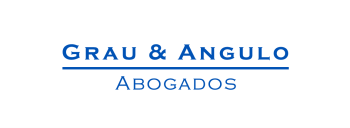In a January 14 2015 judgment the Alicante Community Trademark Court No 2 upheld a suit filed by Carolina Herrera Limited, Puig France SAS, Gaulme, SAS and Antonio Puig, SA – all part of Spanish perfume and fashion group PUIG – against several companies of the Saphir Group and a supermarket chain which offered for sale and marketed perfumes under the brands Saphir, Caravan and IAP, which allegedly smelled like perfumes identified with the plaintiffs' well-known trademarks.
The suit was filed based on the defendants' use of the plaintiffs' trademarks – including CAROLINA HERRERA, NINA RICCI, PACO RABANNE and JEAN PAUL GAULTIER – to promote, offer and sell their smell-alike perfumes (for further details please see "Court rules on use of comparison lists for smell-alike perfumes").
The court presented as proven facts that the Saphir Group companies used the plaintiffs' signs in comparison lists linking their smell-alike perfumes with the plaintiffs' trademarks. Such lists were supplied to the retailers which distributed their products at the point of sale. Meanwhile, retailers such as the supermarket chain acting as co-defendant sold the Saphir Group's perfumes on their premises by using labels on the displays or shelves which reproduced the plaintiffs' trademarks, using wording such as "Olfactory information about the product: if you like [original perfume trademark], try Caravan No xx". In some cases the labels were supplied by the Saphir Group, while in others they were made by the retailers themselves based on the comparison lists and verbal information about the equivalence provided by the Saphir Group.
The court declared that such use infringed the plaintiffs' trademark rights as it took unfair advantage of the distinctive character and repute of their trademarks. In this case the court refused to apply the fair use exemption (according to which a third party's trademark is used to describe the product's characteristics – here, the smell) since the use of the trademark in this context went beyond what was merely descriptive.
The court affirmed that the defendants' aim was not to inform consumers about the smell of the perfume (as in the perfume field, this is done through samples or testers made available to the public), but rather to transfer the prestige, quality and good image of the plaintiffs' trademarks to those of the defendants.
The court also found that the defendants had committed acts of unfair competition by taking unfair advantage of another party's reputation and had carried out unlawful comparative advertising by presenting the products as imitations or replicas of the plaintiffs' perfumes and freeriding on their trademarks.
Accordingly, the court ordered the defendants to:
- cease and refrain from carrying out such activities using the plaintiffs' trademarks;
- withdraw from the market;
- destroy and stop supplying all materials, lists or means of identification containing such signs; and
- refrain from exploiting them by any means, not only written, but also oral.
For further information on this topic please contact Carlota Viola at Grau & Angulo by telephone (+34 93 202 34 56) or email ([email protected]). The Grau & Angulo website can be accessed at www.gba-ip.com.
This article was first published by the International Law Office, a premium online legal update service for major companies and law firms worldwide. Register for a free subscription.



